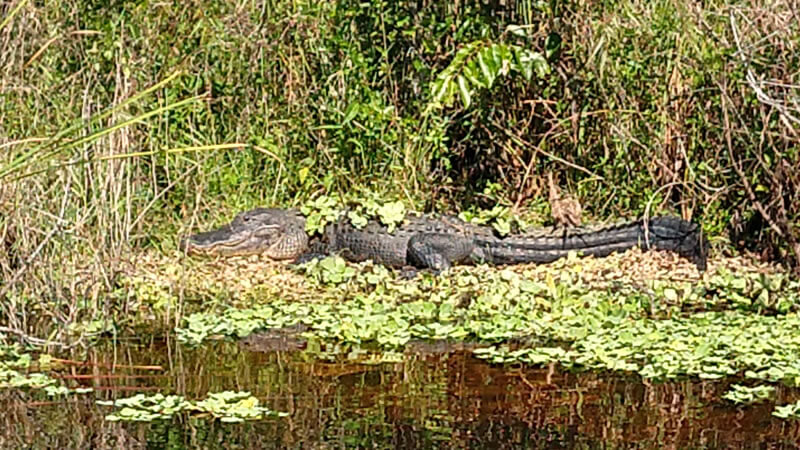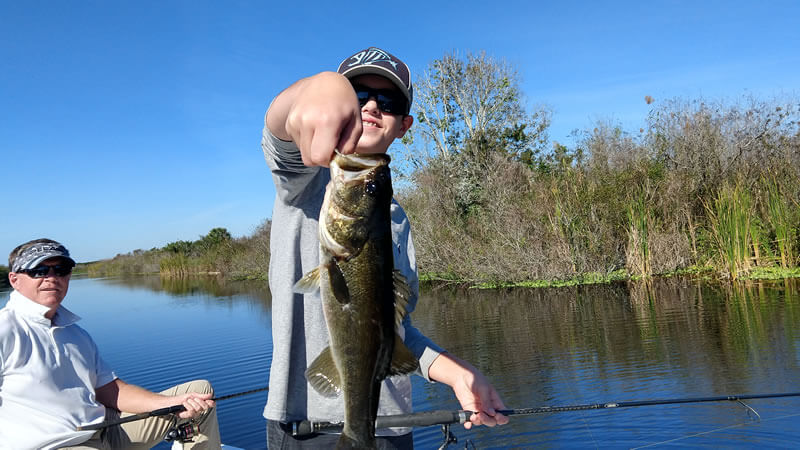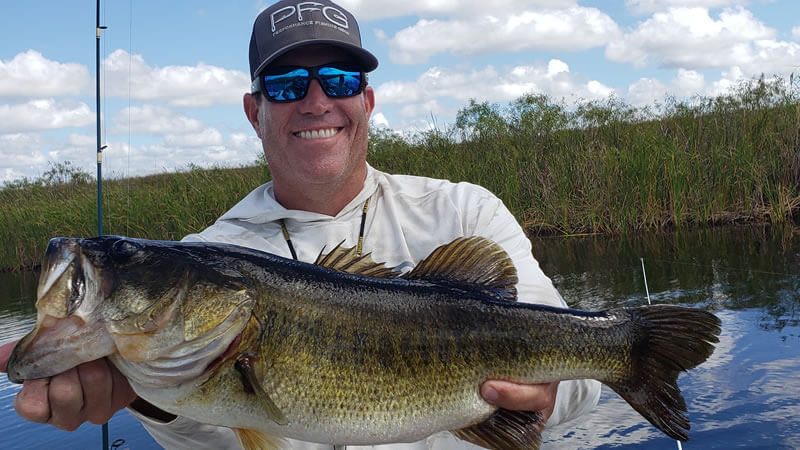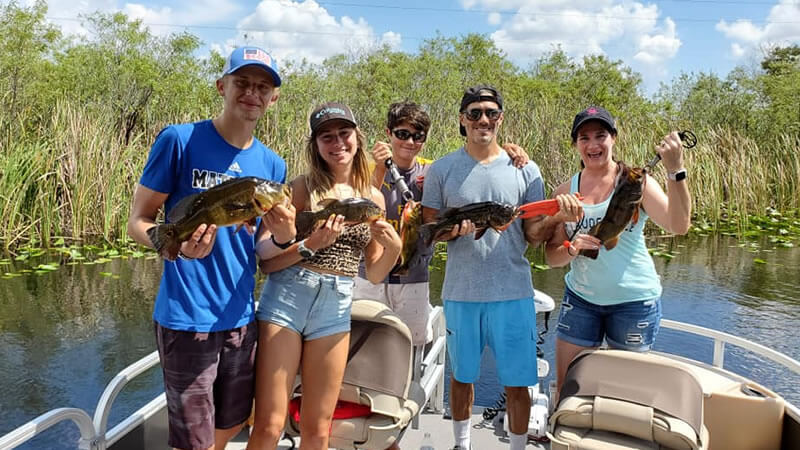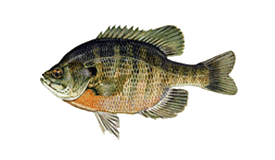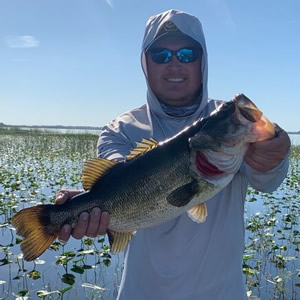Alligator Alley Florida
ALLIGATOR ALLEY TRIPS

Alligator Alley

Best
Alligator Alley

Alligator Alley
About Alligator Alley Fishing
Why Fish the Alligator Alley
The vast amounts of water located along Alligator Alley have produced some of the best bass fishing the state has seen. You can read below how a lot of these fisheries came to existence. These areas are low-pressure fishing areas, and most of them have no access other than by bass boat or airboat. It is not uncommon to catch 100-plus fish in a day at some of these locations when using a fishing guide along Alligator Alley.
How’s Fishing?
The fishing mainly changes by water levels that are changed frequently by South Florida Water Management. You can catch anything from largemouth bass, peacock bass in some locations to Gar, Oscars, Redear, bluegill, and other pan-fish. Oh, by the way, did we mention it is also a great night fishing location?
Amenities:
- Fishing Chairs
- GPS & Fishfinder
- Life Jackets
- Catch and Release Allowed
- Keep Fish Allowed within Laws
About this Tour:
- Boat Specs: 20+ ft
- Boat Capacity: 4 People
- All Fishing Equipment
- Boat & Fuel
- Photos
Fishing Techniques:
- Light Tackle
- Heavy Tackle
- Livebait
- Fly Fishing
- Artificial Lures
Fishing Equipment:
- Spinning Rods
- Baitcasting Rods
- Left & Right Handed
- Fly Rods (request only)
- Braid & Mono Line
Where is Alligator Alley?
Alligator Alley (I-75) is one of the major east-west highways that cross South Florida. Driving east to west along Alligator Alley, one travels through the populated Naples area with its manicured golf courses, Big Cypress Swamp’s wilderness, and the sawgrass marshes of Water Conservation Area 3, which extends to eastern Ft Lauderdale.
Along the Alligator Alley, you may see wading birds in flight and at rest, and yes, alligators are along the canal banks adjacent to the highway. Take the time, step out from behind the vehicle window and see some of the alligators and sawgrass marshes found along Alligator Alley.
What road is known as Alligator Alley?
The marsh of Water Conservation Area 3 leaving Ft Lauderdale, driving to Naples, seems east-west. But because I-75 starts down in Miami from the south and ends north near Ocala, it is considered north and southbound when crossing Alligator Alley.
Heading north on I-75 Alligator Alley, from Ft Lauderdale, there are many recreation areas along the way. Which are on the Google maps located below? Coots are swimming along with the dense plants, a vast sawgrass expanse of Water Conservation Area 3 (WCA-3). Sawgrass is the most abundant plant in the Everglades’ “River of Grass.” It grows 100 miles north and south from Lake Okeechobee to the Gulf of Mexico and 50 – 70 miles east to west.
Can you turn around on Alligator Alley?
A newly built recreation area along I-75(Alligator Alley), located about mile marker 35, provides viewing areas of the marshland that makes up Water Conservation Area 3 and is one of the only locations with restroom facilities, snack machines, and boat ramps. Although there is “no fuel” at this location, there are picnic areas with pavilions that make the Alligator Alley journey much more enjoyable.
What is there to do in Alligator Alley?
Top Local Everglades Fishing Guides
Capt Brett Isackson
Ft Lauderdale, FL
Capt Kirk Osborne
Davie, FL
Capt Tim Nichols
Ft Lauderdale, FL
Capt Rick Mitchell
Naples, FL
Capt John Larsen
Palm Beach, FL
Capt DJ Timms
Clewiston, FL
How much does Alligator Alley cost?
Alligator Alley was initially built as a two-lane toll freeway connecting the two coasts of Florida and has become a very active recreation area connected to Interstate 75 as an east-west continuation of the highway. It is still a toll road, but now a four-lane freeway. Automobile drivers started paying $2.50 to cross, and now it is as high as $17.00 with a boat tow. Before completing its re-engineering, Alligator Alley signed as State Road 84; it is now I-75, but it still has a concurrency with SR 84 designation was made concurrent with the I-75 designation, I-75 and SR 84 split again in Naples.
Why is it called Alligator Alley?
The AAA thought up the name of Alligator Alley to express supreme contempt for a road which it said was “designed with a flagrant disregard for essential safety; that didn’t happen to where its proponents said it would go, and that charged a toll besides.”
The AAA plan to route its membership away from the road was announced in mid-August 1966. It’s director of public relations said the organization opposed toll roads and fought construction of the Alley since it was first conceived. The AAA joined the then Miami Mayor, Robert King High, and the City of Miami to block the road, going to the Supreme Court. But the effort was of no avail. The Alligator Alley argument set the city against the city. It became a factor in politics.
In the state election, some gubernatorial and other candidates seek to get on the opposition bandwagon for publicity purposes and attract the Dade County vote. The argument for and against, and the hard-feelings engendered. Among some of the then-controlling Democratic officeholders and office-seekers contributed in part to Florida’s first Republican governor’s election since the days of Reconstruction.
Alligator Alley is the most controversial road ever built in Florida. Never in Florida history had so many favored building a road, nor so many battled to prevent its construction, reported the Associated Press.
The City of Miami fought it bitterly. Tampa, St. Petersburg, and other more northern west coast metropolitan areas wanted the existing Tamiami Trail to widen and improve. Newspapers of different communities already had their east coast – west coast connecting highways opposed.
The AAA went so far as to issue a unique Anti-Alligator Alley tabloid newspaper in which it reprinted much of the acrimonious argument denigrating the route. In it, it quoted the Miami News: “Appropriate tag for Everglades Expressway, after Road Board’s approving action: ‘Chickee Quickee.’
A Miami News cartoon had a cross-eyed Road Runner labeled “the State Road Department,” standing by its offspring, an odorous little skunk hatching out of an egg — labeled “‘Glades Parkway Road Plan.”
“The State Road Department’s OK of the Pike,” the AAA charged, “swamps public opinion.” The paper continued: “the national AAA joins swamp pike fight.” Under a Toronto, Canada, dateline: “The proposed two-lane toll road across the wilderness of Florida’s Everglades came under sizzling condemnation here (Toronto) at the Annual Convention of the AAA and its affiliate, the Canadian Association. The National Convention condemned the pledging of state gasoline tax revenues paid by highway users to guarantee payment of principal and interest on toll road bonds.”
The Everglades road was dubbed: “Spurnpike,” “Shunpike,” “Narrow Gauge Tollway,” and “Death Row.”
It reprinted Florida newspaper headlines: St Petersburg Times: “A Bond Risk We Can’t Take;” Bradenton Call: “Expensive Drag Strip;” Manatee County Call: “That Turnpike Again;” Miami Herald: “A Few Curves in the Spurnpike;” Tampa Tribune: “Slow Down That Railroad;” Miami Daily News: “What’s Going On In Tallahassee? Time to Bury Swamp Pike;” St. Petersburg Times: “Where’s Bonding Protection?” The Sarasota Herald-Tribune: “Alligator Alley!” and the Fort Lauderdale News: “Model T Type Road.”
In 1968 the Seminole Tribe of Florida, in recognition of his forty-five years as a friend of the Indians, gave Guy Stovall the title Chief Halpatah. Chief Allegator. O. E. “Sonny” White, the project engineer and a veteran State Road Department man, said the fifty or more men who worked on the problematic Alley construction did so by their own choice.
Hurricane and other high winds three times tipped over the two 45 foot steel towers set up so that the engineers could keep a straight line through a sixteen-mile tangent.
The Alligator Alley project began work on the first twenty-seven mile stretch on November 2, 1964. Cone Brothers contracted for the east portion for $5,500,000. R. H. Wright, Fort Lauderdale, was awarded the contract for a ten-mile piece from Naples eastward for $1,375,000. To build any section required super-equipment and, frequently, supermen.
The solid crushed limerock base was scooped from below the muck and waterways of the adjacent canal. Big scale demucking and embankment building required many, many workers. This work was indeed a modern-day miracle over a route where no white man ever ventured before. The road proper started when massive draglines, walking on unique mats, inched their way out into the sawgrass to strip off the muck. Barges carrying dynamite drills floated in behind these draglines to blast out the lime rock of the ‘Glades floor. Other dredges cast the dynamited material out of the canal.
The rock was crushed from Alligator Alley, placed on the
roadbed, stabilized to form a compact base eight and a half inches thick, and then a binder material was placed on the road. Finally, the surface material on which traffic rolls were placed.
An anonymous construction worker summed up the hazards of the road-building. He wrote this prayer in an “Alley” outbuilding:
“Please, Lord, I’ve been a good man. So if I get cotton-mouth bit or attacked by some of Oscar the Alligator’s brothers, and if I get to that Big Job in the Sky, oh, please, Lord, let it be on dry land. Amen!”
Alligator Alley, the name the American Automobile Association used for the road, became official on August 19, 1966, when the State Road Board, meeting in Naples, adopted it. “Alley’s a good name,” said County Commission Chairman A. C. Hancock. “It’ll attract tourists.”
Controversy over the building of Alligator Alley began abating in the spring of 1966. The state, from the beginning, had ample right-of-way for four-laning as soon as traffic warranted. The highway surface was 24 feet, more expansive than either U.S. 27 or State Road 84, initially only 20 feet wide. The highway was twelve feet above sea level and seven feet higher than the ‘Glades’ adjacent water. Motorists, particularly those crossing the state in the early morning or late afternoon hours in winter and spring months, see a wide variety of bird and animal life. Bridges every mile or two add to the scenic route and permit the uninterrupted natural flow of Everglades water southward from Lake Okeechobee. The western terminus is at the interchange of Radio Road, five miles from Naples and its beaches, shops, and hotels on the Gulf of Mexico.
Current Alligator Alley Fishing Reports
February Everglades Bass Fishing Charters in South Florida
February Everglades Bass Fishing February has been a strong month for Everglades bass fishing here in South Florida. The remoteness and...
February Everglades Fishing Update for Florida Largemouth Bass
February Everglades Fishing Update If you are looking for the ultimate bass fishing destination, the Florida Everglades is the place to visit....
Family Fun Everglades Fishing for Bass in South Florida
Family Fun Everglades Fishing South Florida is a gorgeous place to travel, whether with the family or on a solo trip. After soaking up the salt...
Beautiful December Everglades Fishing for Florida Bass Species
Beautiful December Everglades Fishing Whether you are traveling from out of state or you want to experience more of what your state has to...
The detailed history of Alligator Alley
It’s called Florida’s most Controversial Highway, Alligator Alley, the road of controversy. Importantly connects the lower east and west coasts of Florida via Broward and Collier Counties. Arrow-straight for most of its length, it crosses the heart of an impenetrable wilderness for the first time, the Florida Everglades. It is the link between the Atlantic and Gulf of Mexico coasts. The Tamiami Trail and the former Connor’s Highway skirt the northeast and southwest Everglades.
Alligator Alley is a remarkable achievement and adventure in road building. Its original official title was The Everglades Parkway. It was also known as the Fort Lauderdale-Naples toll road, but it will always be an alligator alley for those who worked for it and wanted it, who fought and overcame powerful opposition.
For years the need and discussions for such a road were about. A cross-state route was proposed in the declining years of the fabulous Florida Land Boom of the 1920s. An everglades pioneer, Guy W. Stovall, who spent years with the Florida Road Department, long agitated for such a road.
From Alligator Alley’s inception, the Seminole Indians, grown knowledgeable in commerce, supported its completion. They adopted on April 6. 1959, a resolution of approval stating that the road would be valuable in establishing a Big Cypress business. The solution indicated the Council’s willingness to give right-of-way across its Reservation. Signing it were Betty May Jumper, vice chairman, and Laura Mae Osceola, secretary and treasurer.
When opposition developed Alligator Alley in the 1960s and suits stopped construction, the Seminole Tribe of Florida, Incorporated, and Bill and Billy Osceola, as individuals, intervened in the chancery case before Judge May Walker of Leon County, and in the case before the Florida Supreme Court. They urged confirmation of the construction bonds.
Crucial to the road’s ultimate construction was Gov. Farris Bryant’s appointment of John H. Monahan of Fort Lauderdale as South Florida’s member on the State’s Governing Board Highway Department beginning January 1960. Monahan recognized the need for the cross-state road. He was a leader in Alley’s construction.
No turning back moment
In 1961 the Boards of Collier and Broward Counties pledged to use their secondary gasoline tax funds to guarantee the construction bonds. In a joint session on January 1, 1962, the county Boards of Collier County and Broward County agreed to appropriate $30,000 for Wilbur Smith and Associates’ feasibility study. Collier Commissioner Winfred Jaynes was a driving force. The terrain had no detailed topographic survey and no information available to provide reliable construction estimates.
Four fully equipped survey crews engaged for five months on location in this most challenging terrain. The most modern survey methods and equipment were used where possible. These included the measurement of long distances by electronic means and using amphibious vehicles, helicopters, airboats, and two-way radios. To expedite the work, survey crews camped in the Everglades and cypress swamps for weeks. Unusually dry conditions in the ‘Glades facilitated work on the feasibility study.
Wilbur Smith was employed on February 28, 1962, for the traffic and revenue report. On August 30, the same year, J. E. Greiner was chosen to prepare an engineering report. The McLaughlin Engineering Company of Fort Lauderdale conducted the preliminary soil survey for Greiner, with J. W. McLaughlin, Jr. in personal charge.
A helicopter flew a compass course, dropped markers every half-mile from Andytown to Miles City east of Naples, and landed engineers. McLaughlin used a stopwatch to time his marker drops. They probed to determine the soil’s quality, the surface rock, the muck, and other materials available at each marked site.
Next came the Florida Testing and Engineering Company. A planned, unique 32-day trip across the Everglades made structural borings and a soil profile for the proposed highway. In April 1963, James V. Winterholler, Jr., P.E., President of the company, entered the Everglades at Andytown. Winterholler’s party consisted of five men, a Greiner inspector, and a cook and guide from Immokalee. They loaded boring equipment on airboats. Winterholler carried maps prepared by Greiner indicating where to position the borings.
The airboats worked satisfactorily from Andytown to the western Broward County line. But when cypress country was reached, it was necessary to switch to large swamp buggies equipped with massive airplane tires. These were transported down through the Big Cypress Seminole Reservation. This was the first such survey made across the Everglades and the first time a drill crew ever made actual borings directly across the Everglades.
In May of 1963, J. E. Greiner Co. Tampa brought in its report, stating, “The proposed project is feasible in its civil engineering and construction aspects.”Hopes soared when the Circuit Court approved the issuance of $17,000,000 in bonds. The Supreme Court approved the validation of the bonds in mid-may 1964. It was to connect the easterly limits of State Route 858, six miles east of Naples, with U.S. Route 84 at Andytown, 18 miles west of Fort Lauderdale. Initially, two lanes were proposed, but engineering studies and preliminary designs provided for the ultimate construction of a four-lane divided highway.
In Collier County and the western portion of Broward County, a borrow canal was opened parallel to and north of the roadway. In most of Broward County, where large areas of muck or material unsuited for roadway construction exist, borrow canals were excavated on both sides of the future four-lane facility. In Collier County, other than at existing or proposed canals, concrete box culverts handle natural drainage.
Formidable, almost overwhelming, opposition developed even before the project got off the ground. Anticipated opposition from big Dade County, due to losing some initial traffic to the road, was supplemented by state-wide political candidates seeking the favor of the heavy Dade County vote and by others who honestly thought the project impossible or impracticable.
Alligator Alley Lakes Reviews
Mark Rose
Good fish on a bad day
Alligator Alley Bass fishing
CLICK HERE TO WRITE ALLIGATOR ALLEY REVIEW
What are you waiting for?
Nearby Lake Destinations
We also have great deals available on the following lakes that match your search criteria.


